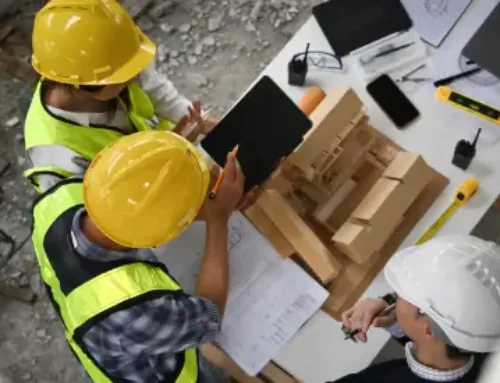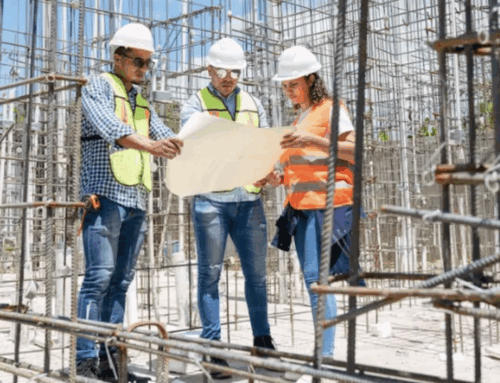Training the workforce, especially in fields like construction, engineering, architecture, and related roles, is crucial for several reasons. Ongoing education and professional development have far-reaching benefits for companies, communities, and the construction industry as a whole. Here’s a breakdown of why training is essential and how it creates value across various levels:
1. Enhancing Employee Skills and Competence
- Keeping Up with Industry Trends: The construction industry is constantly evolving with new technologies, materials, regulations, and best practices. Continuous education ensures that professionals stay up-to-date with the latest industry standards, which is vital for maintaining competitiveness.
- Improved Technical Expertise: Training helps engineers, architects, project managers, and other professionals deepen their technical skills, allowing them to tackle more complex projects efficiently and with greater precision.
- Innovation and Problem Solving: A well-trained workforce is better equipped to innovate and solve problems creatively, leading to more effective and sustainable solutions in construction projects.
2. Boosting Productivity and Efficiency
- Reduced Errors and Rework: Training minimizes the likelihood of errors by ensuring that workers and professionals are well-versed in their roles. This leads to fewer mistakes, less rework, and more efficient project delivery.
- Streamlined Processes: Continuous education helps employees learn new tools and methodologies, which can streamline workflows, improve communication, and enhance collaboration across teams.
- Time Management: Training in project management and scheduling enables professionals to better plan and allocate resources, ensuring projects are completed on time and within budget.
3. Ensuring Compliance and Safety
- Regulatory Compliance: The construction industry is subject to a wide range of regulations and codes. Regular training ensures that all employees are aware of the latest legal requirements, reducing the risk of non-compliance and associated penalties.
- Enhanced Safety: Ongoing safety training is crucial in the construction industry, where the risk of accidents is high. Educating workers on safety protocols reduces the incidence of workplace injuries, contributing to a safer work environment.
- Quality Assurance: Training ensures that employees understand and adhere to quality standards, leading to higher quality work and increased client satisfaction.
4. Promoting Career Growth and Employee Retention
- Career Advancement: Continuous education provides employees with opportunities to advance their careers by acquiring new skills and certifications. This not only motivates employees but also helps companies retain top talent.
- Employee Satisfaction: Investing in employee development fosters a culture of learning and growth, which can lead to higher job satisfaction and lower turnover rates.
- Leadership Development: Training programs aimed at leadership skills help companies cultivate the next generation of leaders, ensuring long-term success and stability.
5. Driving Innovation and Competitiveness
- Adoption of New Technologies: Training helps companies and professionals stay at the forefront of technological advancements, such as Building Information Modeling (BIM), sustainable construction practices, and automation. This enhances a company’s ability to innovate and remain competitive in a fast-changing market.
- Adaptability: A workforce that is continuously learning is more adaptable to changes in the industry, whether it’s new project delivery methods, evolving client needs, or shifts in market demand.
- Market Differentiation: Companies that invest in continuous education can differentiate themselves by offering higher-quality services, using cutting-edge techniques, and providing innovative solutions that set them apart from competitors.
6. Contributing to Community and Industry Development
- Improved Project Outcomes: Well-trained professionals deliver better-quality projects that are safe, durable, and efficient. This has a positive impact on the communities where these projects are located, enhancing infrastructure and quality of life.
- Sustainability and Environmental Impact: Training in sustainable construction practices helps reduce the environmental footprint of projects, contributing to the overall well-being of communities and supporting industry-wide goals for sustainability.
- Economic Growth: A skilled workforce is essential for the economic growth of the construction industry and the broader economy. By investing in training, companies help to create a robust industry that drives job creation, innovation, and infrastructure development.
Conclusion
Training and continuing education are not just necessary; they are pivotal to the success and sustainability of companies, communities, and the construction industry at large. By enhancing skills, improving safety, fostering innovation, and ensuring compliance, training contributes to the overall growth and competitiveness of the industry. Moreover, it empowers employees, strengthens communities, and helps build a more resilient and forward-thinking industry capable of meeting the challenges of tomorrow. The SLC3 is steadfast in its mission to improve our St. Louis region. Be sure to register for our next program today.
Author:
Kelly Jackson, Executive Director
SLC3






